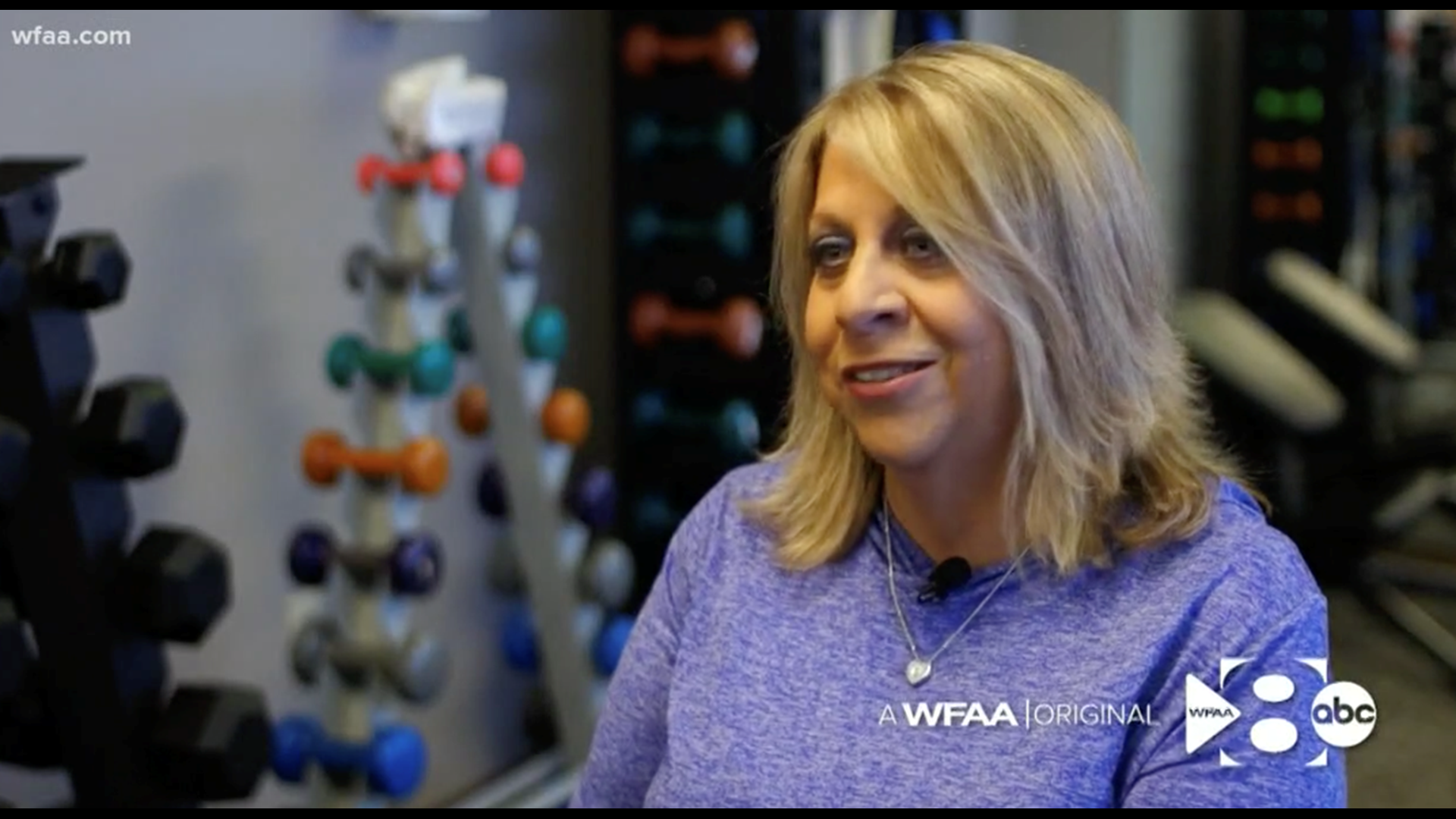DALLAS — Cheryl Sepmoree’s workout routine is ambitious.
"45 minutes spread over three machines," she said. "I do the step, then the treadmill, then the stationary bike."
As challenging as it can be, Sepmoree already completed the hardest part — when she came back to life.
“It was a miracle. It is a miracle," she said. "And if you don’t believe in miracles, come talk to me because I have got it — I am it. I am a walking, talking, enjoying life human being…that on September 22nd….I died.”
On that day in 2018, Sepmoree was working in downtown Dallas when she felt like she needed to belch, her arms started hurting a lot and she became short of breath. A friend called 911, but Sepmoree started feeling better, so they cancelled the call for help.
Then, the symptoms returned. They called 911 again. And she improved again. But this time, Sepmoree’s friend refused to cancel 911. Dallas Fire-Rescue arrived.
Medic Jason Gregory said Sepmoree seemed to be doing okay.
“Checking her out, everything was normal. Blood pressure was normal, EKG was normal," Gregory said.
But the fact that she waited so long to get help made her normal in another way.
The European Society of Cardiology recently published a study that revealed that even when every second matters, women experiencing heart attack symptoms waited an average of 37 minutes longer than men to seek help.
Sepmoree resisted it even after it arrived.
“I am Superwoman, I don’t need you. Thank you very much for coming,” she remembers thinking. Gregory was persistent, though.
“So we convince her to go to the hospital, and reluctantly she agrees to go," he said.
Sepmoree's time was about to run out.
“Her pulse went away about two blocks from the hospital," Gregory said.
For 45 minutes, she was kept alive by machines as doctors worked to clear a blocked artery. She was close to being too late to be helped, said Baylor Scott & White Dallas doctor Cara Norvell.
“Time is heart. So the longer it is delayed if there is an event going on, that heart tissue is dying and the function of the heart will be forever changed,” Norvell said.
Norvell stressed that heart attacks are not primarily a "man thing."
“That is a really common misperception. Generally, women are going to develop heart disease a little later in life than men do, but in both men and women, heart disease is the number one killer."
And women’s symptoms can be different, Norvell said.
“Both men and women, but especially women, are expecting those typical symptoms," she said. "So they are expecting if you are having a heart attack that you are having that crushing left side chest pain that radiates down the arm and that it is not going away and that you are going to be sweating and clutching your chest.
"They’re more likely to have pain that is more on the right side of the chest, pain that is just in the bilateral arms, pain that is in the back, or maybe the jaw or neck, upper abdominal pain, or they feel nauseous, or they think they have heartburn. That also is extremely common.”
Sepmoree had been ignoring the pain in her arms.
“I just thought it was from carrying the briefcase," she said.
In fact, she had been ignoring all symptoms. “When you read the description of what’s happening when you have a heart attack, I was like, 'I can explain that one away and that one and that one.' That is what I was doing. I was oblivious.”
With a healed heart full of gratitude, Sepmoree recently met the people who saved her. And six months after she died and was revived, she has a new purpose in life.
“This helped me to find my voice."
She’s warning other women to stop waiting to seek help for their hearts.
“We ignore the symptoms. I found out I had previous heart attacks. Don’t ignore. Don’t be the silent hero. It could happen to you. Because I am a denial person and it happened to me.”

